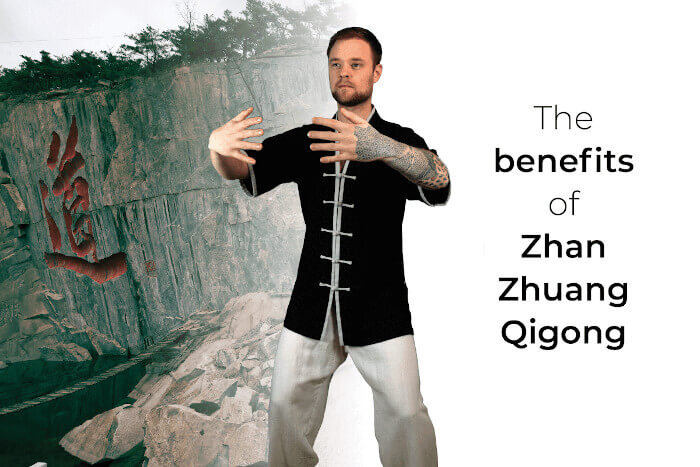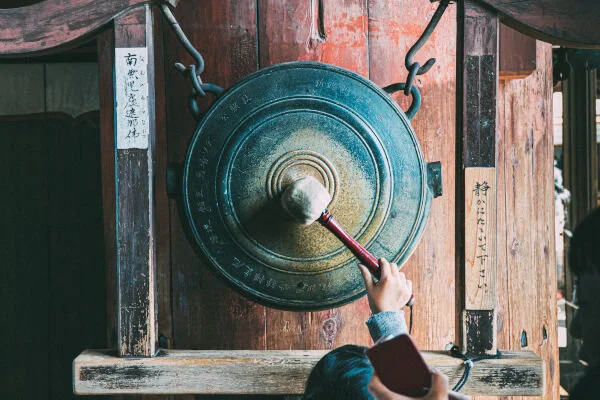Yijin Jing Qigong explained - Muscle & Tendon Changing Qigong
This post is part 1/3 in which I cover the most important facts of Yijin Jing Qigong.
Yijin Jing Qigong explained (this post)
Through my training over the last few years I have learned a lot about the Yijin Jing and made many experiences. First I came across the Xiongshi Yijin Jing method in the Shandong province in China. It was practiced alongside various gongfu styles and used mainly to increase the strength for those martial arts. Later I realized how profound some seemingly simple exercises could be and how these methods are supposed to change the body. It wasn’t until I started studying under my master who has been living at Tiantai Shan (Tongbai Gong), that I began to research this topic more and was taught some of the essential techniques that make such a big difference in regards to the effectiveness of practice.
This article is summarizing what I consider the most important instructions that I have been given to practice the traditional Yijin Jing. (This is part 2/4 of a little series) Some of the information you read was also concluded from various comprehensive writings about Chinese medicine, as well as interpretations of the classics such as “The Secret of Youth, Yijin Jing Classic by Dr. Yang Ywing Ming and “The foundation of Chinese medicine by Giovanni Maciocia” and the “Huang Di Nei Jin”, the yellow emperors classic of internal medicine. All in all, I hope that this article will help you grasp some of the theoretical aspects behind this method and begin the practical training with a stronger conviction and necessary background knowledge.
Being confident with the training method means that you know what to do, trust the process and most likely not give up. Though some aspects will take time to be fully understood and experienced in your own body. Only with consistent practice, patience and perseverance will you be able to get the most powerful results.
In this post I will summarize the fundamental principles and explain the process of transformation and offer you some insights based on my personal experiences.
Introduction
I’m sure by now you know that Yijin Jing is translated into Tendon Changing Classic. “Yi” means change or transformation and “jin” means muscles & tendons. Though “tendons” as we know it in western terminology, suggests a slightly different part of the anatomical body. I will elaborate on that in the following article as this is part of a series. Together, “Yijin” applies the total transformation of the body and mind and a change in the muscles and other tissues. “Jing” means “classic“ as in the original concept of the practice or scripture that was written about it.
First of all you should know that there exist many different methods and practice sets that call themselves the Yijin Jing. Have you ever wondered about that?
So if we leave the term “Yijin Jing” naked, it’s pretty much referring to a classic text. In this case to a kind of manual for body-development. The content of this scripture is suggesting various principles that need to be applied during practice in order to achieve a transformation in the body.
Because there are indeed many different Qigong systems that have adapted these principles and adhered to them closely, they have eventually taken on that same name. That being said there are also some Qigong sets with that name, that seemingly discarded those principles completely. This is somewhat confusing and a topic for another article, so let’s carry on. The principles create the frame work for effective body-development. It means that an Yijin Jing practice is a Qigong system that combines a particular Qigong set with the principles. So it’s not a practice on its own.
Let’s first look at the goal of the Yijin Jing and then discuss the principles. You’ve probably heard of the legend that says that Da Mo (Bodhidharma) developed the Yijin Jing as a way to cultivate body, mind and spirit simultaneously. This allowed the monks in the Shaolin temple to develop a stronger body that would not deteriorate. The results of this training are long-term, unlike conventional strength training which used to be mainly external. This meant the monks could use their strong and vital body as the vehicle for spiritual cultivation.
Goals and benefits
What the Yijin Jing describes are different processes to put the body through to obtain great strength, vitality and health. The first step is rather unspectacular but involves fundamental preparation work. Through different exercises, and this can begin with simple cardiovascular training or stretching exercises, we will improve the bodies functions. Through releasing our chronic tension and opening up the tissues and joints we will be able to improve its efficiency. In small steps we will help the body to regain its physical vitality. Vitality here is a broad term. It includes not only strength, but also flexibility and an elastic quality in our tissues. If you look at young people you will notice these qualities. With age and through extended periods of sitting in classrooms or in front of our devices, lack of movement, or other lifestyle related reasons, we will lose these vital qualities. The Yijin Jing is supposed to maintain or regain this youthful physical state. Through opening and lengthening of the tissues you will increase your blood flow and develop your channels. These channels are like bundles of tissues that run through the entire body and supply it with Qi. Naturally, you will improve your bodies functions, which means you will optimize the function of your internal organs and entire nervous system. But you will also ensure a smooth and strong energy supply to all regions of the body.
This leads us to the final process that our body needs to go through. We will need to improve the quality of the Qi as well as ensuring a strong power supply. No system runs well with low quality fuel or an empty battery. That’s why we need to accumulate and strengthen the Qi as well as building the store house for it.
In the Daojia Yijin Jing this is done by standing pole exercises but also Dan Tian Gong. The Yijin Jing from Tiantai Shan involves the “Yin side” of practice and is also concerned with developing the Dan Tian, breathing exercises and opening up the microcosmic orbit. This will be practiced simultaneously alongside the “Yang side” of training. This is because the internal work requires a slow and steady approach to be able to build the right qualities in the body.
You can see that with the adoption of the Yijin Jing principles it was possible to elevate the training in different traditions and arts. You could improve health through medical Qigong methods or a strong combat-oriented practice like martial arts. It even served as the preparation work for further spiritual practices. This is probably the reason why in China Kungfu and body-development are closely linked to the spiritual practice.
An authentic Yijin Jing Qigong system works on the body in structured and logical steps. The transformation can only take place if the various guidelines and practice order is followed closely. The different layers that we focus on along this process of changing the tissues, begin with the outside or rather with those regions that are easily felt. For example the large muscles. As we move along this continuum of practice we will move our intention further and further from the muscles, to the tendons, connective tissues and fascia to the bones and internal organs. First, we will need to release all the chronic tension in the body. We will stretch the muscles and get rid of all the gross tension. This will allow us to relax the muscles better and stretch them at the same time. Relaxing the large muscle groups down is a key principle of the Yijin Jing. However, this doesn’t mean that the entire body will be slack. Obviously we will need to maintain an upright position and ensure that all the joints are open. This is also applied to the spine. It is important to keep the crown of the head elevated and the pelvis dropped down in order to maintain space between each vertebrae. In short this means that we will need to practice with an open bone structure, opened joints but at the same time relax the large muscles down. When the muscles are relaxed they don’t influence the tissues around them anymore and therefore they will be “taken out of the equation”. As the muscles open up they will release the finer connective tissues and fascia between each muscle fibre. It is important to remember that the muscles remain relaxed. They are the last thing that we want to build to develop strength.
I will continue this explanation of some of the inner workings in the next part of this series.









